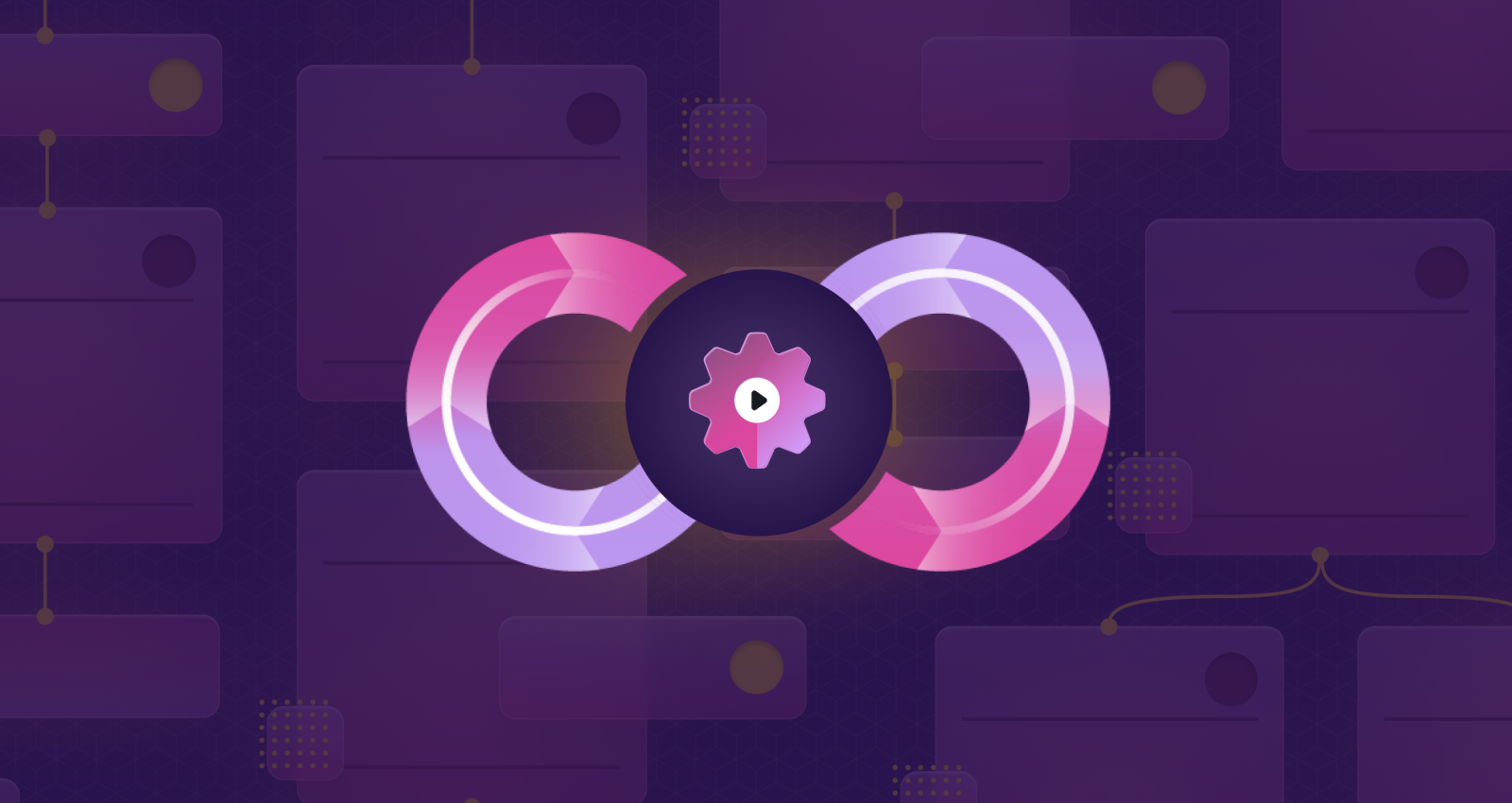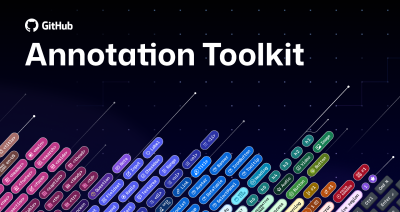Getting started with DevOps automation
This is the second post in our series on DevOps fundamentals. For a guide to what DevOps is and answers to common DevOps myths check out part one. What role…

This is the second post in our series on DevOps fundamentals. For a guide to what DevOps is and answers to common DevOps myths check out part one.
What role does automation play in DevOps?
First things first—automation is one of the key principles for accelerating with DevOps. As noted in my last blog post, it enables consistency, reliability, and efficiency within the organization, making it easier for teams to discover and troubleshoot problems.
However, as we’ve worked with organizations, we’ve found not everyone knows where to get started, or which processes can and should be automated. In this post, we’ll discuss a few best practices and insights to get teams moving in the right direction.
A few helpful guidelines
The path to DevOps automation is continually evolving. Before we dive into best practices, there are a few common guidelines to keep in mind as you’re deciding what and how you automate.
- Choose open standards. Your contributors and team may change, but that doesn’t mean your tooling has to. By maintaining tooling that follows common, open standards, you can simplify onboarding and save time on specialized training. Community-driven standards for packaging, runtime, configuration, and even networking and storage—like those found in Kubernetes—also become even more important as DevOps and deployments move toward the cloud.
- Use dynamic variables. Prioritizing reusable code will reduce the amount of rework and duplication you have, both now and in the future. Whether in scripts or specialized tools, securely using externally-defined variables is an easy way to apply your automation to different environments without needing to change the code itself.
- Use flexible tooling you can take with you. It’s not always possible to find a tool that fits every situation, but using a DevOps tool that allows you to change technologies also helps reduce rework when companies change direction. By choosing a solution with a wide ecosystem of partner integrations that works with any cloud, you’ll be able to define your unique set of best practices and reach your goals—without being restricted by your toolchain.
DevOps automation best practices
Now that our guidelines are in place, we can evaluate which sets of processes we need to automate. We’ve broken some best practices for DevOps automation into four categories to help you get started.
1. Continuous integration, continuous delivery, and continuous deployment
We often think of the term “DevOps” as being synonymous with “CI/CD”. At GitHub we recognize that DevOps includes so much more, from enabling contributors to build and run code (or deploy configurations) to improving developer productivity. In turn, this shortens the time it takes to build and deliver applications, helping teams add value and learn faster. While CI/CD and DevOps aren’t precisely the same, CI/CD is still a core component of DevOps automation.
- Continuous integration (CI) is a process that implements testing on every change, enabling users to see if their changes break anything in the environment.
- Continuous delivery (CD) is the practice of building software in a way that allows you to deploy any successful release candidate to production at any time.
- Continuous deployment (CD) takes continuous delivery a step further. With continuous deployment, every successful change is automatically deployed to production. Since some industries and technologies can’t immediately release new changes to customers (think hardware and manufacturing), adopting continuous deployment depends on your organization and product.
Together, continuous integration and continuous delivery (commonly referred to as CI/CD) create a collaborative process for people to work on projects through shared ownership. At the same time, teams can maintain quality control through automation and bring new features to users with continuous deployment.
2. Change management
Change management is often a critical part of business processes. Like the automation guidelines, there are some common principles and tooling that development and operations teams can use to create consistency.
- Version control: The practice of using version control has a long history rooted in helping people revert changes and learn from past decisions. From RCS to SVN, CVS to Perforce, ClearCase to Git, version control is a staple for enabling teams to collaborate by providing a common workflow and code base for individuals to work with.
- Change control: Along with maintaining your code’s version history, having a system in place to coordinate and facilitate changes helps to maintain product direction, reduces the probability of harmful changes to your code, and encourages a collaborative process.
- Configuration management: Configuration management makes it easier for everyone to manage complex deployments through templates and manage changes at scale with proper controls and approvals.
3. ‘X’ as code
By now, you also may have heard of “infrastructure as code,” “configuration as code,” “policy as code,” or some of the other “as code” models. These models provide a declarative framework for managing different aspects of your operating environments through high level abstractions. Stated another way, you provide variables to a tool and the output is consistently the same, allowing you to recreate your resources consistently. DevOps implements the “as code” principle with several goals, including: an auditable change trail for compliance, collaborative change process via version control, a consistent, testable and reliable way of deploying resources, and as a way to lower the learning curve for new team members.
- Infrastructure as code (IaC) provides a declarative model for creating immutable infrastructure using the same versioning and workflow that developers use for source code. As changes are introduced to your infrastructure requirements, new infrastructure is defined, tested, and deployed with new configurations through automated declarative pipelines.
- Platform as code (PaC) provides a declarative model for services similar to how infrastructure as code provides a framework for recreating the same infrastructure—allowing you to rapidly deploy services to existing infrastructure with high-level abstractions.
- Configuration as code (CaC) brings the next level of declarative pipelining by defining the configuration of your applications as versioned resources.
- Policy as code brings versioning and the DevOps workflow to security and policy management.
4. Continuous monitoring
Operational insights are an invaluable component of any production environment. In order to understand the behaviors of your software in production, you need to have information about how it operates. Continuous monitoring—the processes and technology that monitor performance and stability of applications and infrastructure throughout the software lifecycle—provides operations teams with data to help troubleshoot, and development teams the information needed to debug and patch. This also leads into an important aspect of security, where DevSecOps takes on these principles with a security focus. Choosing the right monitoring tools can be the difference between a slight service interruption and a major outage. When it comes to gaining operational insights, there are some important considerations:
- Logging gives you a continuous stream of data about your business’ critical components. Application logs, infrastructure logs, and audit logs all provide important data that helps teams learn and improve products.
- Monitoring provides a level of intelligence and interpretation to the raw data provided in logs and metrics. With advanced tooling, monitoring can provide teams with correlated insights beyond what the raw data provides.
- Alerting provides proactive notifications to respective teams to help them stay ahead of major issues. When effectively implemented, these alerts not only let you know when something has gone wrong, but can also provide teams with critical debugging information to help solve the problem quickly.
- Tracing takes logging a step further, providing a deeper level of application performance and behavioral insights that can greatly impact the stability and scalability of applications in production environments.
Putting DevOps automation into action
At this point, we’ve talked much about automation in the DevOps space, so is DevOps all about automation? Put simply, no. Automation is an important means to accomplishing this work efficiently between teams. Whether you’re new to DevOps or migrating from another set of automation solutions, testing new tooling with a small project or process is a great place to start. It will lay the foundation for scaling and standardizing automation across your entire organization, including how to measure effectiveness and progression toward your goals.
Regardless of which toolset you choose to automate your DevOps workflow, evaluating your teams’ current workflows and the information you need to do your work will help guide you to your tool and platform selection, and set the stage for success. Here are a few more resources to help you along the way:
Want to see what DevOps automation looks like in practice? See how engineers at Wiley build faster and more securely with GitHub Actions.
Tags:
Written by
Related posts

Level up design-to-code collaboration with GitHub’s open source Annotation Toolkit
Prevent accessibility issues before they reach production. The Annotation Toolkit brings clarity, compliance, and collaboration directly into your Figma workflow.

How to use the GitHub and JFrog integration for secure, traceable builds from commit to production
Connect commits to artifacts without switching tools.

How to streamline GitHub API calls in Azure Pipelines
Build a custom Azure DevOps extension that eliminates the complexity of JWT generation and token management, enabling powerful automation and enhanced security controls.